Q
What is the Width of Tesla Model 3?
The body width of the Tesla Model 3 is 1,848 millimeters (excluding mirrors). This dimension performs excellently in the urban driving environment in Malaysia. It's suitable for maneuvering through narrow streets while still offering a spacious interior. The Model 3's streamlined design not only optimizes the drag coefficient to improve the range but also incorporates an advanced layout of cameras and sensors to support the Autopilot intelligent driving function.
For Malaysian consumers, the width of the Model 3 is similar to that of common mid - sized Japanese or European sedans in the local market. However, its electric platform structure allows for higher utilization of interior space, especially in the rear legroom. Notably, since electric vehicles don't require the traditional transmission structure, the central floor is completely flat, which further enhances the seating comfort.
Against the backdrop of the increasing popularity of charging facilities in Malaysia, the Model 3's compact size and efficient energy consumption make it an ideal choice for urban commuting. Meanwhile, its high - tech interior and OTA remote upgrade function also meet the preferences of the local young consumer group for smart cars.
Special Disclaimer: This content is published by users and does not represent the views or position of PCauto.
Related Q&A
Q
What Segment is Tesla Model 3?
The Tesla Model 3 falls into the D-segment category (also known as the "mid-size car" or "Executive Car" niche). This segment typically includes mid- to high-end models with a body length of around 4.6 to 4.9 meters and a wheelbase of 2.7 to 2.9 meters. Its competitors encompass traditional luxury brand models like the BMW 3 Series and the Mercedes-Benz C-Class.
In the Malaysian market, the Model 3 has become a key choice for local consumers to access high - end electric vehicles, thanks to its advantages in electrification technology (such as a range of up to 491 kilometers under the WLTP standard on a single charge) and intelligent features (like Autopilot assisted driving). Notably, the Malaysian government offers preferential policies such as exemption from import duties for electric vehicles, making the Model 3 more price - competitive locally.
The D - segment cars, with their moderate body size (for example, the Model 3 is 4,720mm long), combine flexibility and space practicality on Malaysian city roads, making them particularly suitable for congested urban environments like Kuala Lumpur. Other electric options in the same segment include the BYD Seal and the Hyundai Ioniq 6. However, the Model 3 still maintains a significant edge, thanks to Tesla's well - established charging network (12 Supercharger stations have been deployed across Malaysia).
Q
What is the Reslae Value of Tesla Model 3?
The Tesla Model 3 has a relatively high second - hand resale value in Malaysia. This is mainly due to its brand influence, the maturity of electric vehicle technology, and low maintenance costs. According to market observations, the Model 3 can still retain about 60 - 70% of its residual value after three years of use, which is better than many fuel - powered vehicles in the same class. This is related to its long battery life, continuous software updates, and the improvement of charging infrastructure.
For Malaysian consumers, the tax - exemption policy for electric vehicles further reduces the cost of purchasing a car, indirectly increasing the demand in the second - hand market. In addition, Tesla's global unified pricing strategy reduces price fluctuations, making the second - hand car prices more stable.
If you're considering buying a Model 3, it is recommended that you pay attention to the battery health and warranty period, as these factors can significantly affect the resale value. Meanwhile, the gradually expanding charging network in Malaysia also makes the use of electric vehicles more convenient, which will help maintain its second - hand market performance in the long run.
Q
What is the PCD Size of Tesla Model 3?
The PCD (Pitch Circle Diameter) of the Tesla Model 3 is 5x114.3 mm. This means that its wheels have 5 bolt holes, evenly distributed on a circle with a diameter of 114.3 mm. This is a common specification for many modern cars, especially widely used in Japanese and some European models. For Malaysian car owners, it's very important to know the PCD size because it's a key parameter when replacing wheels or upgrading the braking system, ensuring that the new wheels match the original vehicle perfectly. Additionally, the PCD size also affects the vehicle's handling and safety. An incorrect PCD may lead to the wheels not being installed properly or vibrations during driving.
The wheels of the Tesla Model 3 are also compatible with wheels having a center bore diameter of 64.1 mm, and the bolt thread specification is M14x1.5. These details need to be noted when purchasing modified wheels. Since the climate in Malaysia is rainy and humid, it is recommended that car owners choose high - quality wheels and regularly check the bolt tightening to ensure driving safety.
Q
Does Tesla Model 3 Support Apple Carplay?
Currently, the Tesla Model 3 doesn't support the Apple CarPlay feature. This is mainly because Tesla adheres to using its self - developed Infotainment system. This system integrates functions such as navigation, entertainment, and vehicle control, aiming to offer an integrated user experience. Although Apple CarPlay is a standard or optional feature in many other brands' models, Tesla owners can achieve similar functions through its built - in streaming services, Bluetooth connection, or the Tesla mobile app.
For users in Malaysia, Tesla's local services are gradually being improved. For example, it supports local maps and voice commands. So, even without Apple CarPlay, daily use remains convenient. If you have high requirements for in - vehicle connectivity functions, you can look into some models from other brands like BMW, Mercedes - Benz, or the local brand Proton. These models usually offer Apple CarPlay support. However, Tesla's unique advantage lies in its highly integrated system and OTA update capability, which can continuously bring new features to users.
Q
What is the Tyre Brand of Tesla Model 3?
The common original - equipment tire brands for the Tesla Model 3 in the Malaysian market include Michelin, Bridgestone, and Goodyear. The specific configurations may vary depending on the vehicle model version or production batch. For example, the high - performance version may be paired with tires like Michelin Pilot Sport 4S, which focus on grip. The selection of these international brands is to balance the instantaneous torque requirements unique to electric vehicles, low - noise performance, and range optimization. In particular, Michelin's noise - reduction technology can effectively offset the road noise that becomes more noticeable due to the lack of engine noise in electric vehicles.
It's worth noting that Malaysia has a tropical climate with frequent rainfall. Car owners can pay attention to the wet - road performance indicators of tires (such as the AA traction rating in the UTQG grade). When replacing tires, they can also consider the commonly seen Continental from Germany or locally - assembled Japanese brands like Yokohama, which also have formulations suitable for high - temperature and rainy road conditions. Tesla service centers usually recommend suitable replacement tires based on the road conditions in Malaysia. It is recommended that car owners regularly check the tire pressure to ensure it is within the numerical range required for electric vehicles, which is particularly important for maintaining the driving range.
Q
Is Tesla Model 3 a Good Car? Learn the Pros and Cons Here
As a pure - electric sedan, the Tesla Model 3 has a certain appeal in the Malaysian market. Its advantages include excellent acceleration performance, advanced autonomous driving assistance features, and relatively low daily usage costs. In particular, the electricity cost is more economical compared to that of fuel - powered vehicles, making it suitable for urban commuting in Malaysia. Additionally, the Model 3's high - tech interior design and OTA remote upgrade function also provide users with a convenient experience.
However, its drawbacks are also worth noting. For instance, given that the charging infrastructure in Malaysia is not fully popularized, long - distance travel may encounter the problem of inconvenient charging. Meanwhile, the relatively high initial purchase price and the later battery replacement cost may also make some consumers hesitate.
For Malaysian users, if their daily commuting distance is short and there are charging facilities at home or in the workplace, the Model 3 is a good choice. But if they often need to drive long - distance, they may need to plan the charging route more carefully.
Overall, the Model 3 stands out in terms of environmental protection and technology. However, before making an actual purchase, it is necessary to comprehensively consider personal vehicle - using needs and budget.
Q
What is the Road Tax Price of Tesla Model 3? How to Calculate?
In Malaysia, the road tax price for the Tesla Model 3 is calculated based on the electric vehicle's motor power (kW), rather than the engine capacity of traditional fuel-powered vehicles. This is a special policy implemented by the Malaysian government for electric vehicles. According to the current regulations, the formula for calculating the road tax for electric vehicles is: a charge of RM20 per kilowatt (kW). For example, the rear - wheel - drive version of the Tesla Model 3 has a motor power of 208kW, so its road tax would be 208 x RM20 = RM4,160. The high - performance all - wheel - drive version has a motor power of 377kW, and its road tax would be 377 x RM20 = RM7,540.
It should be noted that electric vehicles in Malaysia enjoy road tax exemption benefits. As of the end of 2023, the government has temporarily waived the road tax for electric vehicles. Therefore, currently, Tesla Model 3 owners do not need to pay road tax. However, future policies may be adjusted, and it is recommended to follow the latest announcements from the Malaysian Ministry of Transport.
In addition, electric vehicles in Malaysia also enjoy preferential policies such as import tax and consumption tax exemptions. These policies aim to encourage more people to choose environmentally friendly vehicles and reduce carbon emissions.
If you are considering buying a Tesla Model 3, apart from the road tax, you can also learn about practical information such as the distribution of charging facilities and the installation of home charging piles to better plan your vehicle - using life.
Q
What is the Second Hand Price of Tesla Model 3? Check Used Price Here
In Malaysia, the price of used Tesla Model 3s is influenced by factors such as the vehicle's age, mileage, configuration, and condition. Currently, the price range is approximately between 120,000 and 180,000 Malaysian ringgit, depending on the specific circumstances of the vehicle. For example, a 2020 standard - range version with low mileage might cost around 120,000 ringgit, while a well - conditioned 2022 long - range or performance version could reach about 180,000 ringgit.
When buying a used electric vehicle, it's advisable to check the battery's health status and the remaining warranty period. Tesla's official battery warranty usually lasts for 8 years or 160,000 kilometers, which is an important guarantee for second - hand buyers. Moreover, the Malaysian government offers tax incentives for electric vehicles, such as exemptions on import and sales taxes, which indirectly enhances the cost - effectiveness of used Teslas.
If you're considering buying a used Model 3, it's recommended to go through official certified channels or reputable used - car dealers. This ensures that the vehicle has undergone professional inspections and comes with a complete warranty service. Plus, you'll enjoy a more transparent transaction process.
Q
What is the Tyre Pressure of Tesla Model 3?
The recommended standard tire pressure for the Tesla Model 3 is 2.9 to 3.1 bar (42 to 45 psi). The specific values may vary slightly depending on the vehicle configuration or tire model. Owners can find the official recommended values on the label of the door frame or in the vehicle manual. In Malaysia, where the climate is hot, the tire pressure will increase slightly as the temperature rises. It is recommended to check the tire pressure at least once a month, especially before long - distance driving, to ensure driving safety and energy - efficiency. Using a Tire Pressure Monitoring System (TPMS) can monitor the tire pressure status in real - time. If the tire pressure is too low, it will increase tire wear and energy consumption; if it is too high, it will affect the grip and comfort. It's worth noting that for electric vehicles, due to the special distribution of battery weight, maintaining the correct tire pressure is particularly important for the range performance. At the same time, it is recommended to choose the original - certified tires to meet the vehicle's performance requirements.
Q
What is the Weel Size of Tesla Model 3?
The wheel sizes of the Tesla Model 3 vary depending on the model and configuration. The standard version usually comes with 18 - inch wheels, while the high - performance version may be equipped with 19 or 20 - inch wheels. The specific sizes may be adjusted according to the year and regional configuration. In Malaysia, Tesla Model 3 owners can choose the appropriate wheel size according to their personal preferences and driving needs. Larger wheels generally enhance the vehicle's sporty appearance, but they may slightly affect comfort and driving range. Smaller wheels, on the other hand, are more suitable for daily commuting and can provide better energy - efficiency performance.
In addition, the choice of wheel size also affects the cost of tire replacement and the driving experience. It is recommended that owners consult professionals when changing wheels to ensure compatibility and safety. As a popular electric vehicle, the wheel design of the Tesla Model 3 not only focuses on aesthetics but also takes aerodynamic performance into account to optimize the driving range.
Latest Q&A
Q
How big is the fuel tank on a 2018 DMAX?
The 2018 D-MAX has a 76-liter fuel tank, a design that meets long-distance driving or heavy-haul needs while still keeping an eye on fuel economy. Diesel engine models usually come with larger tanks because diesel vehicles are more fuel-efficient and have plenty of torque, making them great for frequent hauling or off-roading. It's worth noting that actual range can still be affected by driving habits, road conditions, and load. We recommend checking the fuel level regularly and planning refueling stops accordingly. Most pickups in this class have tanks ranging from 60 to 80 liters, so the D-MAX's 76 liters is above average for the segment—pretty handy for users who often hit construction sites or take long trips. If you want to save more fuel, keep your tire pressure at the right level, avoid sudden acceleration and hard braking, and maintain the fuel system on schedule.
Q
How much is a 2018 D-Max?
The used car prices for the 2018 D-Max vary depending on factors like condition, mileage, trim level, and location. Current market rates are roughly between RM60,000 and RM90,000. Low-mileage, well-maintained high-spec models might edge closer to the upper end, while base trims or higher-mileage examples will be more affordable. This pickup comes with a 3.0T diesel engine, delivering reliable performance and strong off-road capabilities – perfect for users needing to balance cargo hauling with daily driving. Its modification potential is also a hit with enthusiasts. When buying, it's advisable to focus on checking for chassis rust, engine condition, and 4WD system status. If purchasing through a used car dealer, request an inspection report or arrange third-party testing. Additionally, the D-Max benefits from a comprehensive parts supply and service network, making post-purchase maintenance costs relatively reasonable. However, diesel vehicles do require regular fuel system cleaning and DPF maintenance to keep them running at their best. If your budget is tight, you could also consider same-year competitors like the Toyota Hilux or Mitsubishi Triton, but be sure to compare specs and service records thoroughly before deciding.
Q
How big is the Isuzu DMAX 2018?
The 2018 Isuzu D-MAX measures 5295mm in length, 1860mm in width, and 1775mm in height, with a wheelbase of 3095mm. It's one of the roomier options in the midsize pickup segment, offering excellent cargo space and passenger comfort. The cargo bed checks in at 1485mm long, 1530mm wide, and 475mm high, making it ideal for everyday hauling needs. On top of that, its approach angle, departure angle, and ground clearance are all impressive, ensuring solid off-road capability when you need it. Under the hood, the 2018 D-MAX packs a 3.0-liter turbocharged diesel engine that cranks out 177 horsepower and 380 Nm of peak torque. It delivers strong performance while keeping fuel efficiency in check, handling all kinds of road conditions with ease. Inside, you'll find handy features like a multifunction steering wheel, touchscreen infotainment system, and airbags, which boost both the driving experience and safety. As a tough and reliable pickup, the 2018 D-MAX has always been a hit in the market, especially for users who need to balance work and play. Whether you're commuting in the city or heading out for an outdoor adventure, it handles it all without breaking a sweat.
Q
What engine is in the 2018 Isuzu D-Max?
The 2018 Isuzu D-Max comes with two diesel engine options: the 3.0-liter 4JJ1-TC Hi-Power turbocharged diesel and the 2.5-liter 4JK1-TC Hi-Power turbocharged diesel. The 3.0-liter unit cranks out 177 horsepower and 380 Nm of peak torque, while the 2.5-liter engine delivers 136 horsepower and 320 Nm of torque. Both engines are mated to either a 6-speed manual or 6-speed automatic transmission, striking a balance between performance and fuel efficiency. As a pickup truck, the D-Max's engines feature Isuzu's exclusive common-rail fuel injection technology and variable geometry turbochargers, providing strong low-end torque that's perfect for hauling and off-roading, while also keeping noise levels in check. It's worth noting that both engines have stood the test of time in the market, boasting standout durability and reliability in their class, along with reasonably affordable maintenance costs – making them a solid pick for users who frequently drive long distances or need a workhorse for commercial use. Isuzu has deep technical expertise in diesel engines, and the D-Max's engine design prioritizes stability in tropical climates, ensuring it performs well even in hot and humid conditions.
Q
Is the 2021 Volkswagen Arteon a good car?
The 2021 Volkswagen Arteon is a solid all-around performer. It sports a sleek, dynamic exterior with coupe-like flowing lines and frameless doors that give it plenty of personality. Inside, it features VW's family-style design, with solid materials and build quality throughout. The digital cockpit and large infotainment screen add a nice tech vibe. Under the hood, you've got a 2.0T turbo engine paired with a 7-speed dual-clutch transmission, delivering smooth yet ample power. The driving feel leans comfortable but doesn't skimp on sportiness. Space is another strong suit – rear legroom is generous, and the trunk is roomy, making it really practical. Safety-wise, it comes loaded with active tech like adaptive cruise control and lane keep assist. All in all, it's a vehicle that blends good looks, performance, and utility, perfect for buyers who want something stylish and fun to drive. Sure, its price is a bit higher than some competitors, but considering it's imported and the overall quality, it's still good value. For maintenance, VW has a pretty extensive service network and parts availability, so owning it long-term should be hassle-free.
View MoreRelated News

Tesla launches Model Y Standard in the US, removes glass roof
MichaelOct 9, 2025
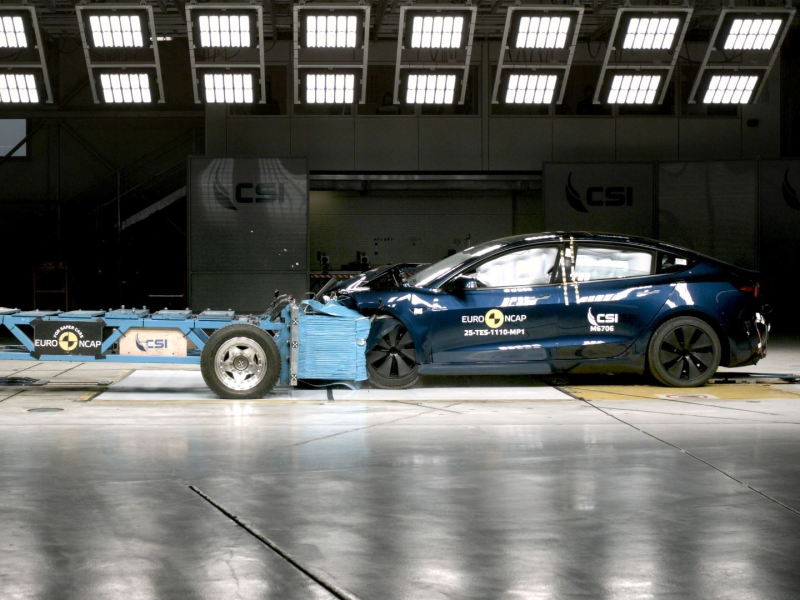
Tesla Model 3 scored the highest in 2025 Euro NCAP, becoming the safest new car in Europe
AshleyJul 8, 2025
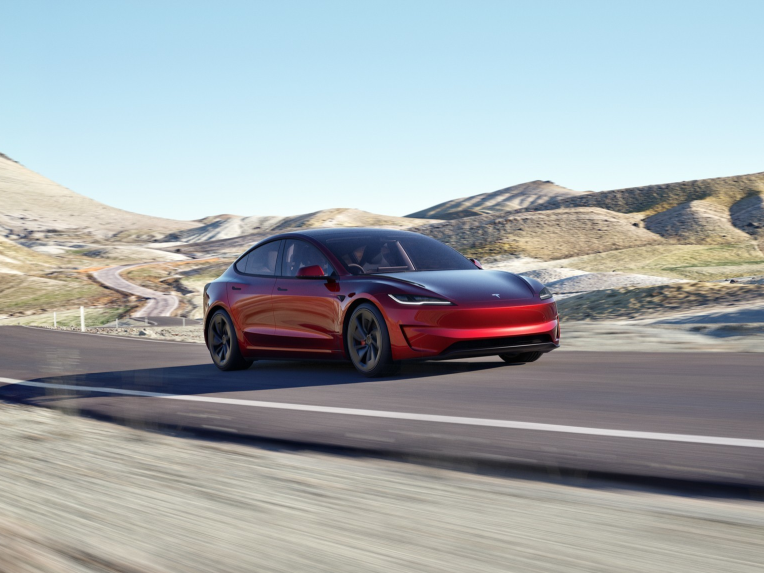
Tesla improves the range and performance of Model 3/Y without changing the battery capacity
Kevin WongJul 3, 2025
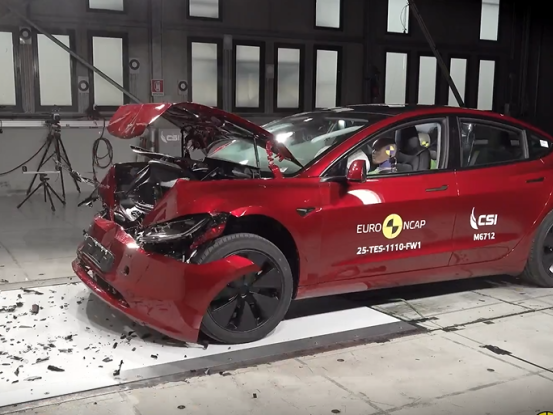
2025 Tesla Model 3: Euro NCAP 5-Star Safety Champion
LienMay 23, 2025

Tank vs Tesla: The Underbody Wins
WilliamMay 12, 2025
View More










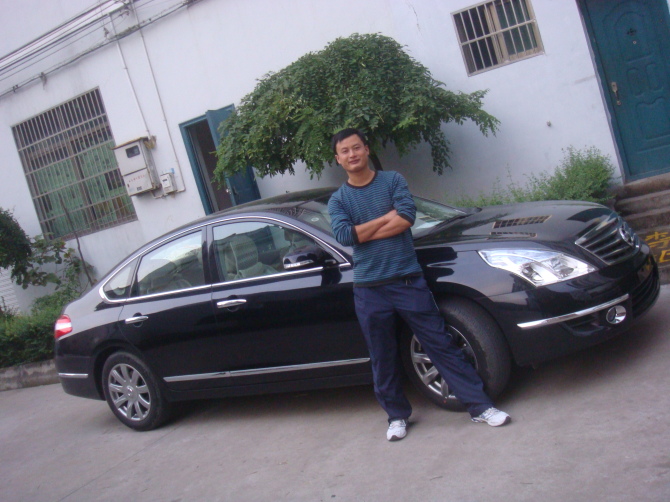
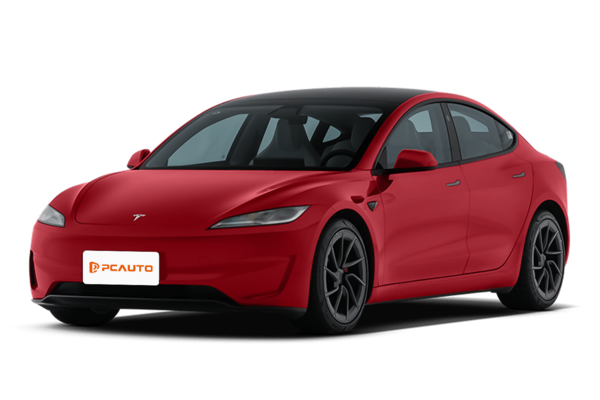





Pros
Cons